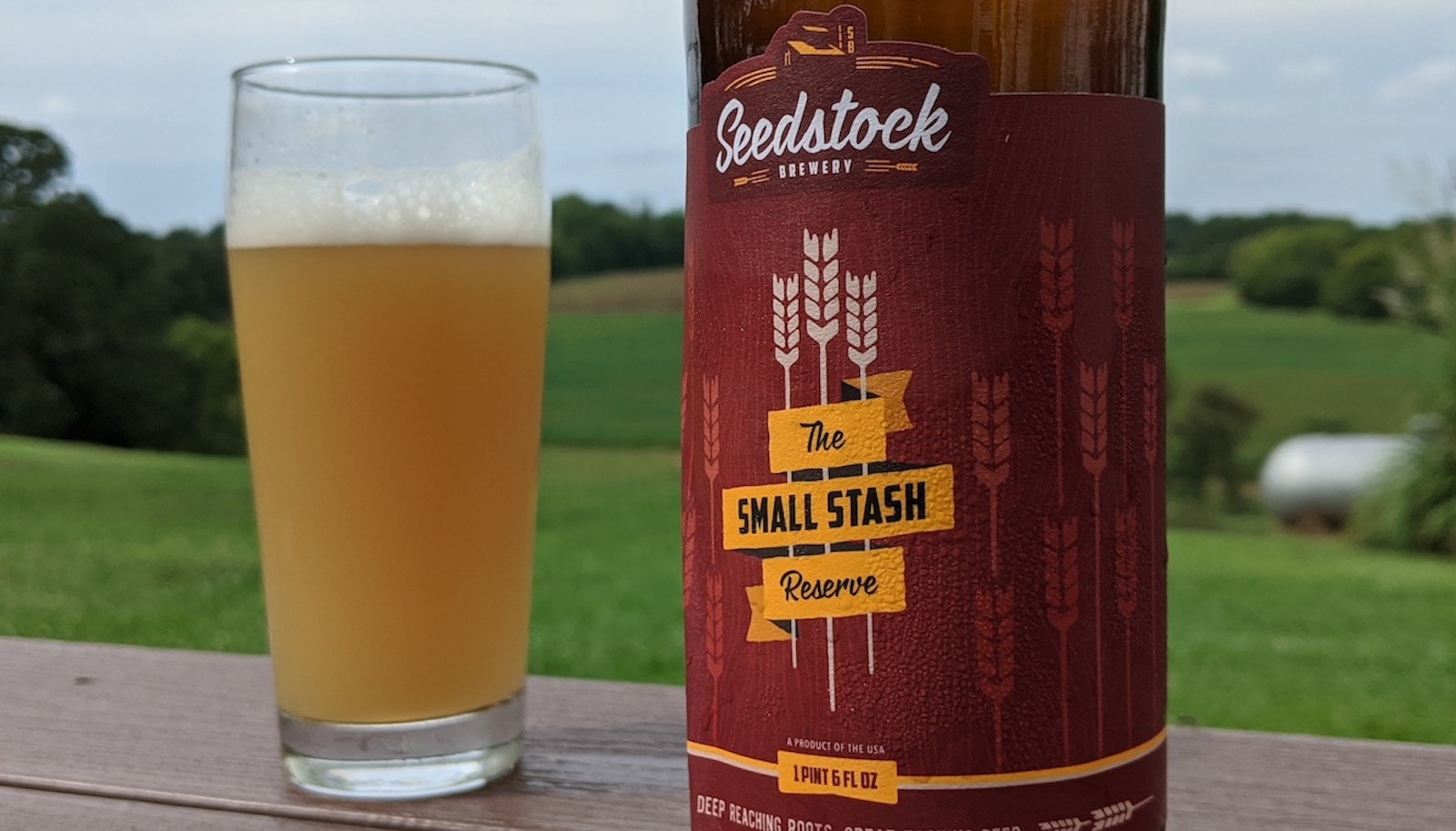Jason Abbott, head brewer and co-owner of Seedstock Brewery, is no stranger to brewing relatively obscure, historically rooted beers.
On any given day, Seedstock’s tap list in Denver’s West Colfax neighborhood is crammed with styles such as Grätzer, Düsseldorfer Altbier, or Vienna Lager. Others that Abbott has brewed over the years include Lichtenhainer, Broyhan, old Prague-style ale, and—how’s this for obscure?—Fredersdorfer, a strong, brown, top-fermenting beer that was popular in Berlin in the early 19th century.
In combining obscurity with unusual recipe, however, there are few weirder than Horner.
Abbott got the idea to brew Horner from his friend Matthew Peetz, founder of the Propagate yeast lab in Golden, Colorado. Peetz spotted the recipe in Andreas Krennmair’s book, Historic German and Austrian Beers for the Home Brewer. They decided to give it a try, starting with a batch on Abbott’s old five-gallon homebrew kit, then stepping it up to Seedstock’s half-barrel pilot system.
Not much is known about Horner, from a technical standpoint, except that (1) it was brewed from 100 percent oat malt, and (2) some sources say that brewers added cream of tartar, contributing a refreshing acidity. It was said to be fizzy, very pale, yellowish, and murky—which makes sense, given the all-oats grist.
According to Krennmair, Horner—apparently from the Lower Austrian town called Horn—was popular in Austria the 1700s and 1800s, and especially in Vienna. Its earliest known mention is a 1687 ducal resolution regarding taxes on beer. A late 18th century tune long attributed to Mozart—but possibly composed by Wenzel Trnka, according to more recent scholarship—explicitly mentions the beer as a summertime refresher:
Ich nehm Limonade, Mandelmilch,
auch zu Zeiten Horner Bier;
das im heißen Sommer nur.I’ll have lemonade, almond milk,
Also at times Horner beer;
Only in the hot summer.ADVERTISEMENT
Now that he’s brewed it a couple of times, Abbott has made some adjustments from Krenmair’s educated-guesswork recipe. He reduced the oats to account for his own brewhouse efficiencies, and he reduced the cream of tartar somewhat. “It was a little bit too acidic,” he says.
In the final product, the lemony tartness is subtle. The beer’s most defining trait is an unmistakable oatmeal-like character—silky in body despite lively carbonation, with sweet and earthy flavor. “I’m just a huge fan of the way the oats came through in that beer,” Abbott says.
The mash can be a trial. Without other grains in the grist, the oats kept slipping through Abbott’s mill, so he had to hand-grind them. Then there’s the slow, gummy mash: “Almost as bad as doing a 100-percent wheat beer,” Abbott says. So, he uses rice hulls—lots of them. Abbott suggests a 2:1 ratio of oat malt to rice hulls. “It was a little slow, but it wasn’t too bad.”
The final product, indeed, looks pretty milky, much like fresh wort. “It looked exactly the same through the whole process,” Abbott says. It’s also lively and refreshing, as advertised—with added value for those interested in drinking liquid time machines.
“I want people to come in and see that what we have on the menu is very traditional,” he says. “That’s what people come to see us for. You can get your IPAs in lots of places.” (Of course, it is still Colorado, and Abbott brews an IPA, too, called No Coast.) “It’s a place you can come with any beer drinker and find something for everybody.”
Recipe: Horner Bier
This Horner recipe is based on the one in Krennmair’s book, Historic German and Austrian Beers for the Home Brewer, based on the limited information available. We have not dialed back the cream of tartar, as Abbott did. However, we have added the rice hulls as a sensible reminder.
ALL-GRAIN
Batch size: 5 gallons (19 liters)
Brewhouse efficiency: 72%
OG: 1.034
FG: 1.008
IBUs: 10
ABV: 3.4%
MALT/GRAIN BILL
8.6 lb (3.9 kg) oat malt
4.3 lb (2 kg) rice hulls
HOPS & ADDITIONS SCHEDULE
0.68 oz (19 g) Saaz [3.75% AA] at 60 minutes
0.35 oz (10 g) cream of tartar at 60 minutes
YEAST
White Labs WLP029 German Ale/Kölsch or similar strain, such as Fermentis SafAle K-97
DIRECTIONS
Mill the oats, mix with the rice hulls, and mash at 153°F (67°C) for about 60 minutes, or until fully converted. Run off into the kettle, sparging and topping up as necessary to obtain 6 gallons (23 l) of wort—or more, depending on your evaporation rate. Boil for 60 minutes, adding hops and cream of tartar at the start of the boil. After the boil, chill to about 68°F (20°C), aerate well, and pitch the yeast. Ferment at 68°F (20°C) until complete, then package and carbonate.
Photo: Joe Stange

